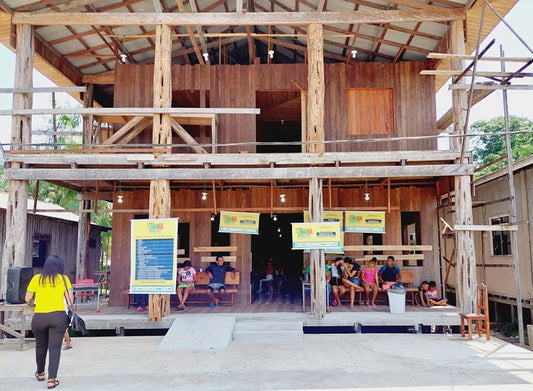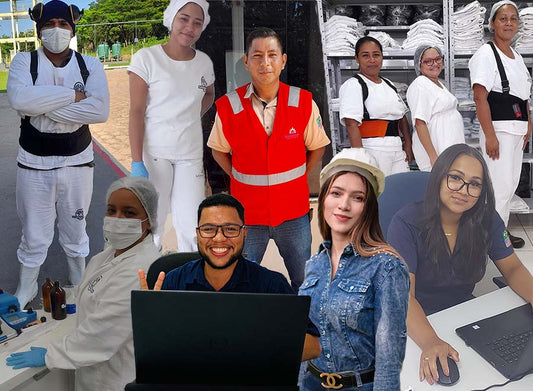Everyone has a carbon footprint, meaning they contribute to environmental pollution and climate change. Everyday activities such as driving to work, cooking, and using appliances can emit varying amounts of greenhouse gasses.
However, some people have larger carbon footprints than others, depending on their lifestyle. For example, you emit more greenhouse gasses when driving a gas-guzzling SUV than when driving an electric or biodiesel vehicle.
Ideally, everyone should try to minimize their carbon footprint and contribute to making the world greener.
What Does Eco-Friendly Mean?
The simplest meaning of eco-friendly is not being harmful to the environment and being conscious of the impact one’s everyday actions have on the environment and the planet by conserving energy, recycling and more. However, being eco-friendly can take many different forms in your lifestyle. Here are seven tips for becoming more eco-friendly:
1. Mind Your Driving Habits
The average passenger vehicle emits about 4.6 metric tons of carbon annually. The transportation industry causes about 30% of global carbon emissions, and cars contribute about 72% of the emissions.
Some cars emit more carbon dioxide than others. Notably, cars that consume more gas than others emit more carbon than the rest. In contrast, electric, hybrid, diesel, and biodiesel cars are more eco-friendly.
Overall, it is advisable to switch to a green vehicle. Another option to be more eco-friendly is to drive less often and try alternatives such as cycling or carpooling.
2. Reduce, Reuse, & Advocate for Better Recycling Infrastructure
The average person generates about four pounds of waste daily and 1.5 tons annually. Overall, the U.S. generates more than 200 million tons of waste annually. About 75% of this waste is recyclable, but the country recycles only about 30% of it. Be sure to learn how to properly recycle. You might be surprised, but simply putting items in the right bin actually won’t make much of a difference unless the item has an end market and infrastructure for recycling. Most of the recycling happens at the industrial level, but it is possible on an individual level, too. Be sure to check out your state’s current bills related to recycling and waste management, and advocate for recycling infrastructure to improve.
Besides recycling, you can also reuse and up-cycle viable or slightly damaged products. For example, you can recycle plastic cans by turning them into planters instead of throwing them out.
3. Carry Reusable Products
The world uses more than 160,000 new plastic bags per second. Overall, Americans use more than 100 billion plastic bags annually, equivalent to 365 plastic bags per person per year. Notably, Americans also use more than 500 million plastic straws and 100 million plastic utensils daily.
Sadly, the world recycles only about 1% of all used plastic bags. 99% of used plastic bags end up in landfills and oceans, and they take many, many years to decompose. Even after those years, the bag never fully breaks down, leaving microplastics behind to continue to pollute our environment.
Overall, it is advisable to buy more eco-friendly products. So, what are eco-friendly products? Essentially, they are products with zero or minimal environmental impacts, such as reusable containers and utensils, plant-based, compostable plastic packaging or cleaning products made from biodegradable ingredients. It’s recommended to carry reusable products such as straws, utensils, bags, and watter bottles when taking on your day, that way you’re always prepared to help out the environment, even if it’s just something as little as ditching that plastic straw.
4. Limit Your Consumption of Bottled Water
Americans open 1,000 water bottles per second. Bottled water is convenient and even necessary in some cases, however, plastic water bottle pollution continues to destroy our planet. In fact, Americans throw away about 60 million empty water bottles daily and more than 35 billion per year.
All plastic waste is detrimental to the environment, and plastic water bottles take longer to decompose than plastic bags. Manufacturing a plastic bottle takes about 2,000 times more energy than generating tap water. Overall, it would be better for the environment if you had one durable, portable, and reusable water bottle.
5. Switch to LED Lighting
The U.S. generates about 38% of its electricity from natural gas and 23% from coal, two pollutant and non-renewable energy sources. Bulbs are among the most used electric appliances, and lighting accounts for about 15% of residential energy consumption.
At least 71% of American households still use incandescent bulbs, while only 1% have made the full transition to LED lighting. Incandescent bulbs use at least 85% more energy than LED bulbs. Switching to LED bulbs will save the world significant levels of carbon emissions and is an easy way to save you some money on your energy bills.
6. Power Off & Unplug
Some people don't bother turning off appliances such as TVs and computers after they are done using them. However, powering off your appliances and devices doesn't guarantee that they will stop using energy – it only means that they are using less energy.
The best way to guarantee that your appliances stop consuming energy is by unplugging them. This will also prevent potential damages in case of electrical surges.
7. Adopt a Plant-Based Diet
Consuming meat is one of the factors contributing to environmental pollution and climate change. Livestock and other animals reared for meat and animal products emit methane and carbon dioxide, two notable greenhouse gasses. Ideally, eating less meat is better for you and can help make the world greener.
SAMBAZON – Delicious, Organic & Eco-Friendly Açaí Smoothies
Eating more plant-based foods, especially with Fair Trade and Organic certifications, is one of the best ways to be more eco-friendly. That’s where SAMBAZON comes in! We offer delicious, organic, Fair-Trade-certified Açaí products and are committed to achieving plant-based and post-consumer recycled packaging for all US retail products by 2025.
Learn more about companies making a difference with their triple bottom lines like Sambazon through our film, Seeding Change.
Sources:
- Conservation International. What is a Carbon Footprint? https://www.conservation.org/stories/what-is-a-carbon-footprint#:~:text=People%2C%20products%20and%20entire%20industries,the%20strain%20on%20the%20environment.
- Environmental Protection Agency. Greenhouse Gas Emissions from a Typical Passenger Vehicle. https://www.epa.gov/greenvehicles/greenhouse-gas-emissions-typical-passenger-vehicle#:~:text=typical%20passenger%20vehicle%3F-,A%20typical%20passenger%20vehicle%20emits%20about%204.6%20metric%20tons%20of,8%2C887%20grams%20of%20CO2.
- Center for Biological Diversity. 10 Facts about Single-Use Plastic Bags. https://www.biologicaldiversity.org/programs/population_and_sustainability/sustainability/plastic_bag_facts.html
- Healthy Human Life. Plastic Water Bottle Pollution: Where do All the Bottles End Up?https://healthyhumanlife.com/blogs/news/plastic-water-bottle-pollution-plastic-bottles-end#:~:text=Every%20single%20second%2C%201%2C000%20people,empty%20water%20bottles%20a%20year.
- Energy Saver. Light Choices to Save You Money. https://www.energy.gov/energysaver/lighting-choices-save-you-money
- Future Learn. Is Eating Meat Bad for the Environment? https://www.futurelearn.com/info/blog/eating-meat-bad-for-environment#:~:text=Meat%20consumption%20is%20responsible%20for,The%20destruction%20of%20forest%20ecosystems.







Comments
(0 Comments)Please note, comments need to be approved before they are published.